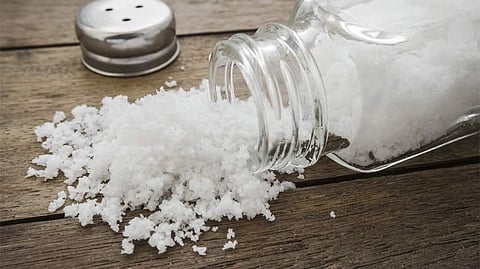

To further strengthen the National Iodine Deficiency Disorder Control Programme with scientific data, Iodine Deficiency Disorder (IDD) Laboratory in Directorate of Public Health (DPH) has been testing urine samples of government school children to check iodised salt consumption. According to the study, 12 percent of the students have low iodine levels and 28 percent have excessive iodine levels. Excessive iodine may cause the thyroid gland to become overactive and produce excess thyroid hormones (hyperthyroidism), particularly in people who used to consume too little iodine. However, sometimesexcess iodine can decrease production of thyroid hormones (causing hypothyroidism).
The laboratory lifted 1,496 urine samples from government school children in the age group of six to 12 years. The samples are being tested from January till last month. They were taken from schools in Thanjavur, Kaniyakumari, Thoothukudi, The Nilgiris and Villupuram districts. From each district, except The Nilgiris, 300 samples were tested. In the Nilgiris alone, 296 samples were tested, officials said.They said the Union Health Ministry had identified 18 districts, including Cuddalore, Dharmapuri, Erode, Perambalur, Pudukottai and Villupuram as endemic to IDD.
A Somasundaram, Additional Director for Universal Health Coverage Programme and Joint Director, Health Education, DPH, told Express We are conducting the study in districts that were identified as endemic.We have been conducting awareness programme in schools for school children and teachers on iodine consumption .Among the 1,496 samples tested, 416 students (28 per cent) had excessive iodine content in their urine samples, 572 (38 per cent) had adequate iodine content, 188 (13 per cent) had mild, 141 (nine per cent) had moderate and 179 (12 per cent) had severe iodine content, that is very less content of iodine. The body takes adequate amount of iodine and excretes the excess. Daily allowance of iodine for children in the age group of one to three is 90 micro grams.
For children in the age group of four to eight, it is 120 micro grams and for those aged between nine and 13, 150 micro grams, explained S Raju, Deputy Director, State Public Health Laboratory.Officials said it is an ongoing study and more samples will be lifted and analysed. Also, the IDD lab has been testing various brands of salt taken from retail shops in urban and rural areas in the districts. According to World Health Organisation (WHO), an estimated 35 per cent of world population has insufficient iodine intake and continues to live at risk for iodine deficiency and associated IDD.
Iodine deficiency poses a threat throughout life. It has been associated with mental impairment and goitre in older children and adults. It is also associated with complications with pregnancy, including stillbirth and congenital anomalies. Also, inadequate iodine intake during pregnancy may lead to irreversible fetal brain damage.
